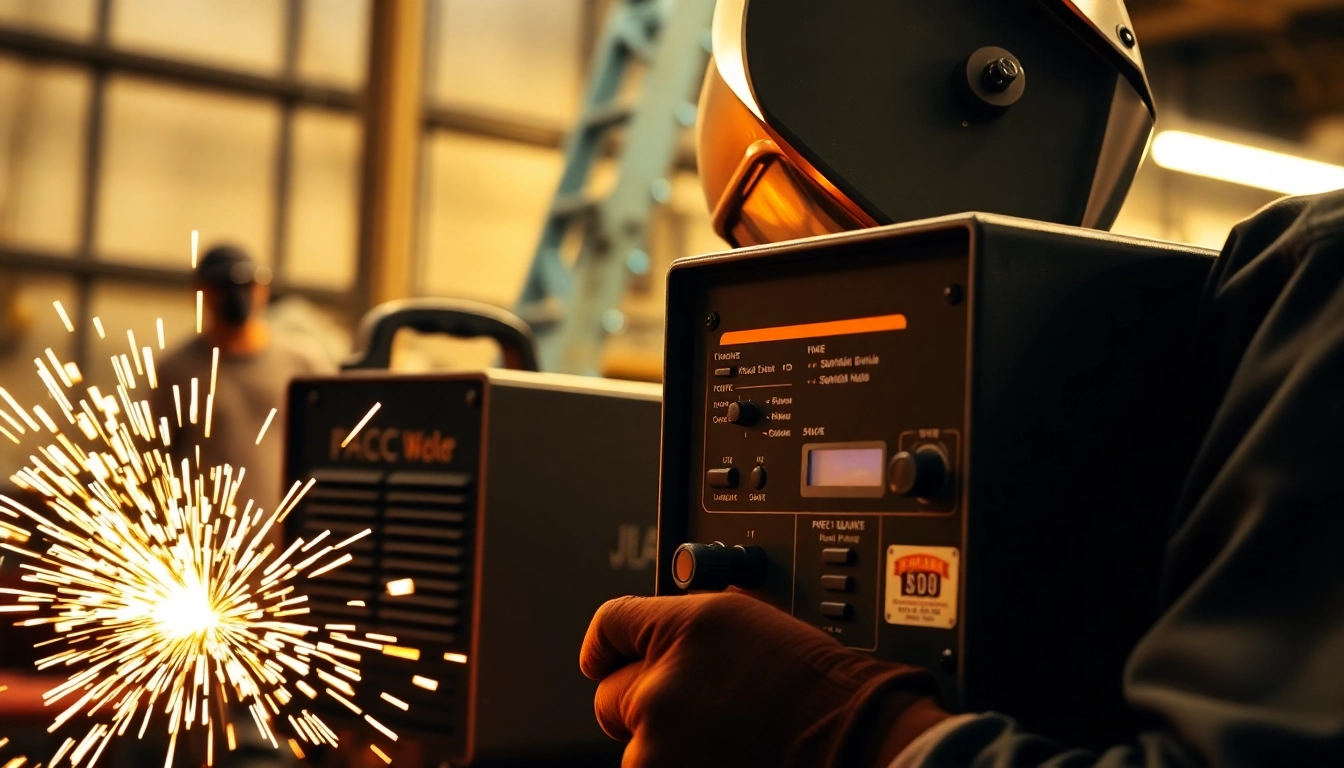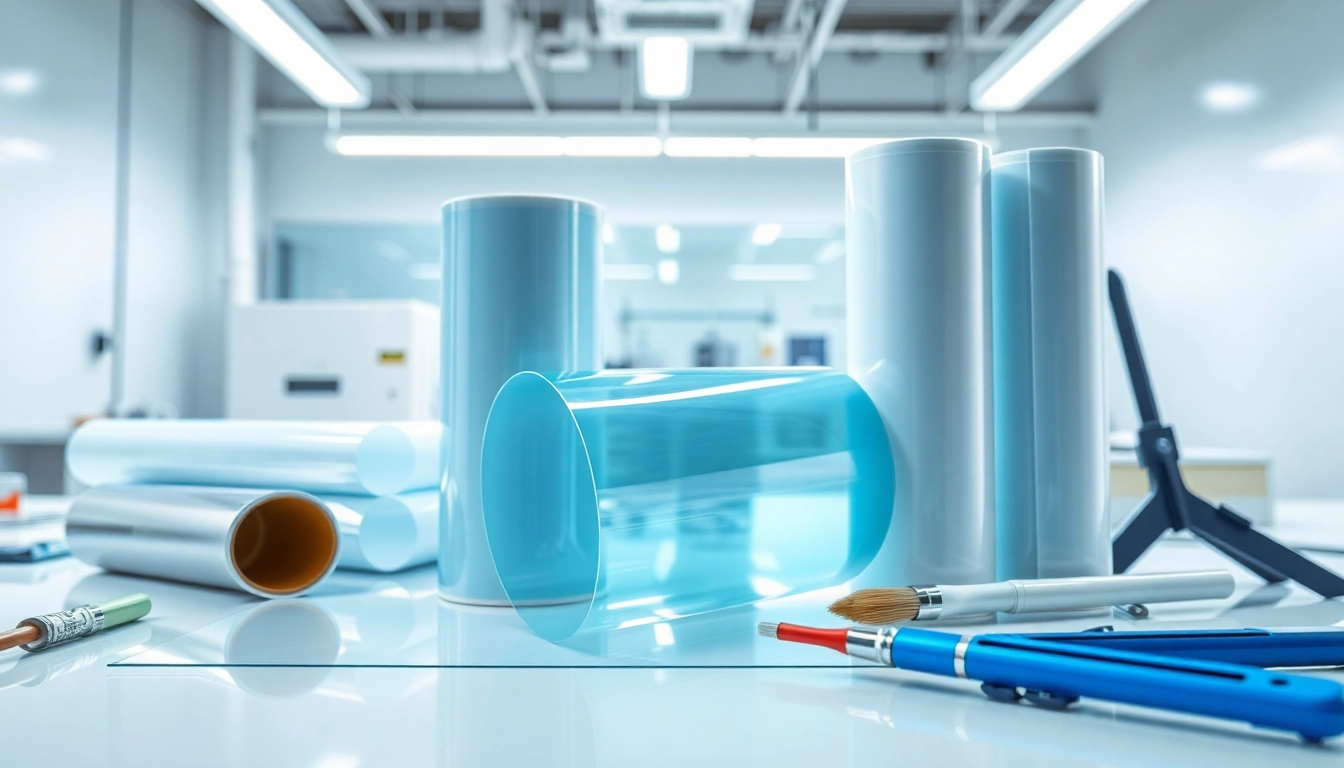Understanding AC DC TIG Welders
What is an AC DC TIG Welder?
An ac dc tig welder is a versatile welding machine that utilizes both alternating current (AC) and direct current (DC) to weld various metals. The unique capability of operating on both currents allows it to join different materials like aluminum, stainless steel, and mild steel efficiently.
AC current is particularly effective for aluminum welding as it helps to clean the surface oxide layer during the welding process. This results in a strong, clean weld bead. On the other hand, DC is often favored for its consistent arc stability and smooth heat control, making it ideal for welding ferrous metals.
How Does AC vs. DC Impact Welding?
The choice between AC and DC significantly affects the welding process and the quality of the weld achieved. AC leads to increased cleaning action on aluminum surfaces, which enhances arc stability and penetration. However, the variable oscillation of AC can sometimes make it trickier to control than the steady nature of DC.
DC welding delivers a more stable arc, which is essential in achieving high precision and greater penetration in materials like steel and stainless steel. It is particularly effective in vertical and overhead applications where precision is critical. In essence, the decision to use AC or DC depends on the type of metal being welded and the specific requirements of the project.
Key Advantages of Using AC DC TIG Welders
- Versatility: The ability to switch between AC and DC allows welders to work on a wider range of materials and thicknesses.
- Quality of Welds: AC DC TIG welders produce cleaner, more precise welds with minimal spatter, especially when welding aluminum and thin materials.
- Increased Control: The flexibility in adjusting settings for different currents provides better heat management during welding.
- Functional for Various Applications: Whether you are in automotive repair, aerospace, or fabrication, an AC DC TIG welder is capable of adapting to different welding needs.
Choosing the Right AC DC TIG Welder
Factors to Consider When Purchasing
When looking to purchase an AC DC TIG welder, several factors should be taken into account to ensure you select the right machine for your needs:
- Welding Thickness Capability: Assess the thickness of the materials you will be working with. Some welders may handle thicker materials better than others.
- Duty Cycle: This refers to the time the welder can operate before needing to cool down. A higher duty cycle allows for longer operation without interruptions.
- Portability: If you will be using your welder in different locations, consider the weight and portability features.
- Adjustability: Look for models with adjustable amperage settings to suit different welding tasks.
- Power Source: Determine whether you need a machine that operates on standard household current or industrial-level three-phase power.
Best Brands for AC DC TIG Welding Equipment
Several prominent brands feature AC DC TIG welders that are recognized for their reliability and performance:
- Miller Electric: Known for high-quality equipment and a wide range of options suited for both hobbyists and professionals.
- Lincoln Electric: Offers durable welders with advanced technology and features that cater to various welding processes.
- Everlast: Provides cost-effective models without sacrificing quality, making it a preferred choice for both amateurs and pros.
- PrimeWeld: Gaining popularity for great performance and affordability, particularly their TIG welders designed for aluminum.
- Hobart: Renowned for producing robust, user-friendly welding machines that perform well in various conditions.
Common Mistakes to Avoid When Buying
While shopping for an AC DC TIG welder, users often make common mistakes that can lead to poor performance or regretful purchases:
- Ignoring Reviews: Failing to check user reviews can result in ending up with an underperforming machine.
- Overlooking Accessories: Some welders might require additional accessories like gas tanks or torches, so it’s essential to factor these into your budget.
- Being Misled by Price: The cheapest option is not always the best choice. Investing in a well-reviewed model from a reputable brand can save headaches in the long run.
- Neglecting to Test: If possible, test the welder to feel its balance, adjustability, and how intuitive the settings are.
Operating Techniques for Effective Welding
Setting Up Your AC DC TIG Welder
Setting up your AC DC TIG welder properly is critical for achieving optimal results. Follow these steps for setup:
- Choose the Right Electrode: Select an appropriate tungsten electrode based on the metal being welded and the functionality of your welder.
- Connect the Torch and Ground Cable: Ensure all connections are secure and that the ground cable has solid contact with the workpiece to minimize arc disruptions.
- Adjust Amperage Settings: Set the amperage based on the thickness of the material you will be welding.
- Set the Gas Flow: Adjust the shielding gas flow to prevent contamination and oxidation during welding.
Mastering the TIG Welding Technique
To achieve high-quality welds, mastering the technique is key. Here are some essential tips:
- Maintain a Steady Hand: Consistency in the speed and angle of the travel is crucial. Practice to get comfortable with the movement.
- Control the Arc Length: A consistent arc length (around the diameter of the electrode) contributes to a steady and efficient weld.
- Use Filler Rods Effectively: If you are not welding a seam, the proper introduction of filler rod into the molten pool is paramount for a strong joint.
- Observe Heat Control: Always monitor the heat when welding to prevent burn-through, especially on thinner materials.
Maintaining Consistent Quality in Welds
Consistency is vital in welding, particularly in professional settings. Here’s how to ensure your welds maintain a high standard:
- Regularly Inspect Settings: Periodically check your settings for amperage, gas flow, and travel speed, particularly if changing materials or techniques.
- Practice Discrimination: Regular practice with different metal types and thicknesses enhances skill and promotes versatility.
- Evaluate Welds: Constantly assess the quality of your welds for any inconsistencies or defects, adapting methods as needed.
- Keep the Workspace Clean: Maintaining a tidy workspace reduces contamination and promotes focus during the welding process.
Applications and Use Cases for AC DC TIG Welders
Welding Aluminum with AC DC TIG
AC DC TIG welders excel at welding aluminum, largely due to the AC functionality that not only penetrates but also cleans the surface of the oxide layer. This cleaning action makes for a better bond and a more aesthetically pleasing finish. Key considerations when welding aluminum include:
- Use Pure Tungsten Electrodes: These allow for better arc stability and are particularly effective for aluminum.
- Implement Proper Shielding: Aiming for a 100% argon shielding gas presents optimal protection during the welding process.
- Heat Management: Aluminum has a high thermal conductivity, requiring careful heat application to avoid distortion or burn-through.
Industries Benefiting from AC DC TIG Welding
Many industries leverage AC DC TIG welding for its high precision and quality. Notable sectors include:
- Aerospace: The need for lightweight and high-strength components makes TIG welding indispensable.
- Automotive: AC DC TIG welders are used for both structural integrity and aesthetic aspects of vehicles.
- Fabrication and Manufacturing: Versatility in materials and strength makes TIG welding a go-to for various manufactured products.
- Marine: TIG welding is used for fabricating intricate aluminum parts for boats and ships.
Real-Life Examples of AC DC TIG Welding Projects
Examining real-world applications and exceptional projects highlights the impact of AC DC TIG welders:
- Custom Motorcycle Fabrication: Many custom bike builders use AC DC TIG welders for their ability to create strong yet lightweight frames.
- Aerospace Components: Precision parts created for aircraft require the high-quality welds provided by TIG welding.
- Recreational Vehicles: The manufacturing of RVs often employs TIG welding to join aluminum in their structures.
Maintaining Your AC DC TIG Welder for Longevity
Essential Maintenance Tips
To ensure that your AC DC TIG welder remains operational and functional over time, regular maintenance is vital:
- Clean the Torch and Fittings: Regularly clean the torch head, gas hoses, and fittings to prevent contamination and ensure a stable arc.
- Inspect Cables: Check cables and connections for wear or damage to avoid performance issues during operation.
- Calibrate Settings: Periodically verify the settings, making sure the correct amperage and gas flow are applied before starting a project.
Common Issues and Troubleshooting
Even with maintenance, issues may arise. Here are some common problems and their solutions:
- Inconsistent Arc: Check the gas flow and pressure settings, ensuring connections are secure.
- Tungsten Electrode Failing: The electrode may need replacing if it’s worn down or contaminated. Use the proper size and type for your project.
- Porosity in Welds: This could indicate inadequate shielding gas coverage. Adjust the flow rate and ensure all components are clean.
When to Seek Professional Repairs
Certain situations warrant professional intervention:
- Severe Damage: If major components of the welder are damaged, replacement may require professional help.
- Electrical Issues: Malfunctions involving wiring or internal components should always be handled by a qualified technician.
- Persistent Performance Issues: If you have conducted troubleshooting and the problems persist, it’s best to consult an expert.



